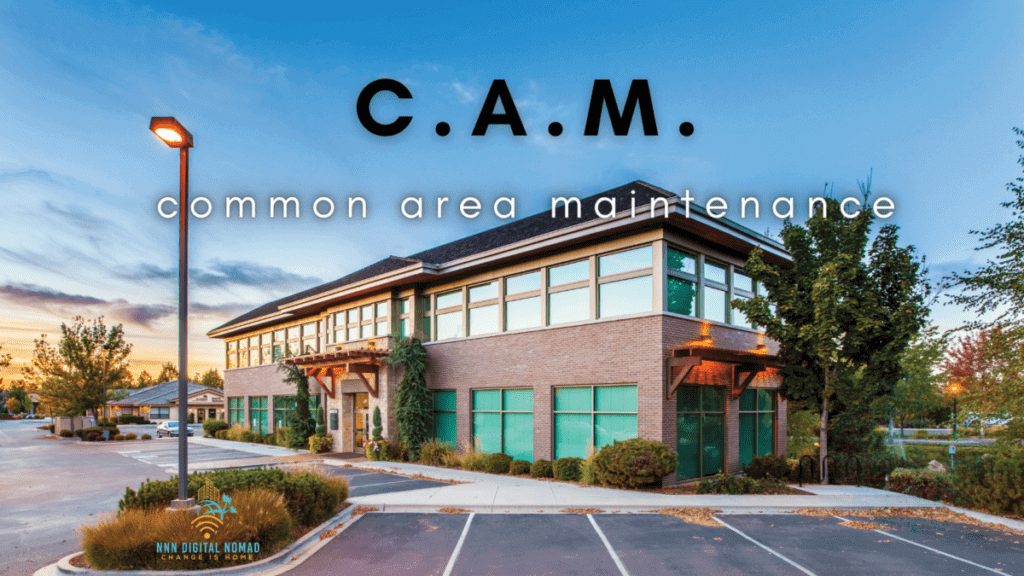
Property in commercial real estate is shared among several tenants. Regarded as a “common area” where no single occupant can claim exclusive access to that space. Instead of the tenants disagreeing over whose responsibility it is to take care of the common areas, the landlord assures proper upkeep. The property owner then collects levies from tenants to manage the running of the space. These costs are called CAM (Common Area Maintenance) expenses. CAM calculations ensure there are enough funds for correct property management.
Common Area Maintenance -What You Need to Know
CAM or Common Area Maintenance charges in real estate are an added financial expense that tenants pay, excluding their monthly leases. It covers the expenses of many maintenance requirements of communal spaces in business parks. Every tenant maintains the internal area of their space and pays a portion of the monthly CAM charges to maintain the external areas and shared spaces.
Categories of CAM structures
Every landlord / tenant relationship differs, and landlords make use of different CAM structures conditional on their overheads and the period they owned the real estate.
4 types of CAM structures:
Fixed CAM: The scheduled monthly CAM charges stay the same and there are no annual reviews or rate changes.
Year-Over-Base cumulative cap: These CAM costs rise annually using anticipated expenses.
Year-Over-Year cap: The cap on CAM expenditures is calculated by using the smallest sum of the previous year’s expenses that favors the occupants.
Year-Over-Base compounding cap: The initial annual rate stays the same, but the cap percentage rises to a heightened amount, which favors the property owner.
CAM fees are calculated depending on the type of commercial real estate property being rented.
Properties include:
- Retail space
- Office space
- Industrial space
Common Charges when Calculating CAM Expenditures
Common area maintenance or CAM is usually categorized into 2 distinct classes: controllable and uncontrollable expenses.
Controllable expenses comprise everything the property owner can regulate, such as janitorial provisions, landscaping, general maintenance like washing windows or preservation of the parking lot.
Uncontrollable expenses include everything out of the commercial real estate property management company or owner’s hands. These items differ from things like insurance, levies, utilities and snow removal.
Calculating CAM Fees
The property owner and tenant have differing interests when it comes to negotiating CAM charges. The property owner would prefer that the property’s operational costs be paid by the tenant. Where the tenant would want to pay as little as possible. This is why negotiations are crucial. After all the included overheads are settled, the commercial real estate owner is in charge of generating an annual budget to assign costs to each renter. These expenses are to be paid monthly, with the rent and, at the end of the year. The actual expenditures are settled in the budgets.
Tips for Commercial Real Estate Landlords
After the budget has been completed, the overall costs are billed to specific occupants based on the total sum of square footage the tenant leases on the property.
Pro Rata Share of Square Footage
A precise formula is used to estimate CAM calculation costs:
CAM Charges= Tenant Square Footage Lease ÷ Gross Leasable Square Footage x Full Operating Costs
Let’s say a property is 50,000 square feet, a tenant inhabits 10,000 square feet of the total space and CAM charges are $100,000, the tenant will pay $20,000.
At the end of the year, the property owner will calculate the precise operating costs. If these expenses are below budget, and they charge too much, they will write up a credit for the tenants. If the CAM expenses were higher than the budget, they will collect the difference from the tenant.
Maximizing CAM Revenues
Every commercial real estate property owner wants to increase their monthly revenues. The following are some key areas to consider.
Initial Base Year Calculations
It is important for the base year CAM to be calculated correctly, as this impacts the CAM calculation for future years. During a lease renewal, it is possible that the base year can be reset.
Gross Up Your Clauses
There is a general CAM related clause that permits specific adjustable expenditures, determined by tenancy, to be grossed up to a predetermined percentage if the building is not completely occupied. This grossed up cash sum can be included in the associated CAM charges.
Administration Fees
Leases differ on the administration fee that the tenant needs to pay. The fee can be defined as a determined amount. The landlord could charge an increased fee that is much higher than the actual management fees.
The Money is in the Details
CAM expenditures are generally covered in a commercial lease so that there is no uncertainty on where the landlord’s obligations end and the tenant’s responsibility begin. Make sure as landlord or tenant that you understand and approve each clause in your agreement to ensure no future complications or arguments arise that could have been avoided by reading the fine print. Here is a book that I highly recommend all investors and brokers to read in regards to Commercial Real Estate Management, Property, Types, Contracts, and more:

Before you go, check out my list sharing the 7 Essential Books for Beginner Real Estate Investors
